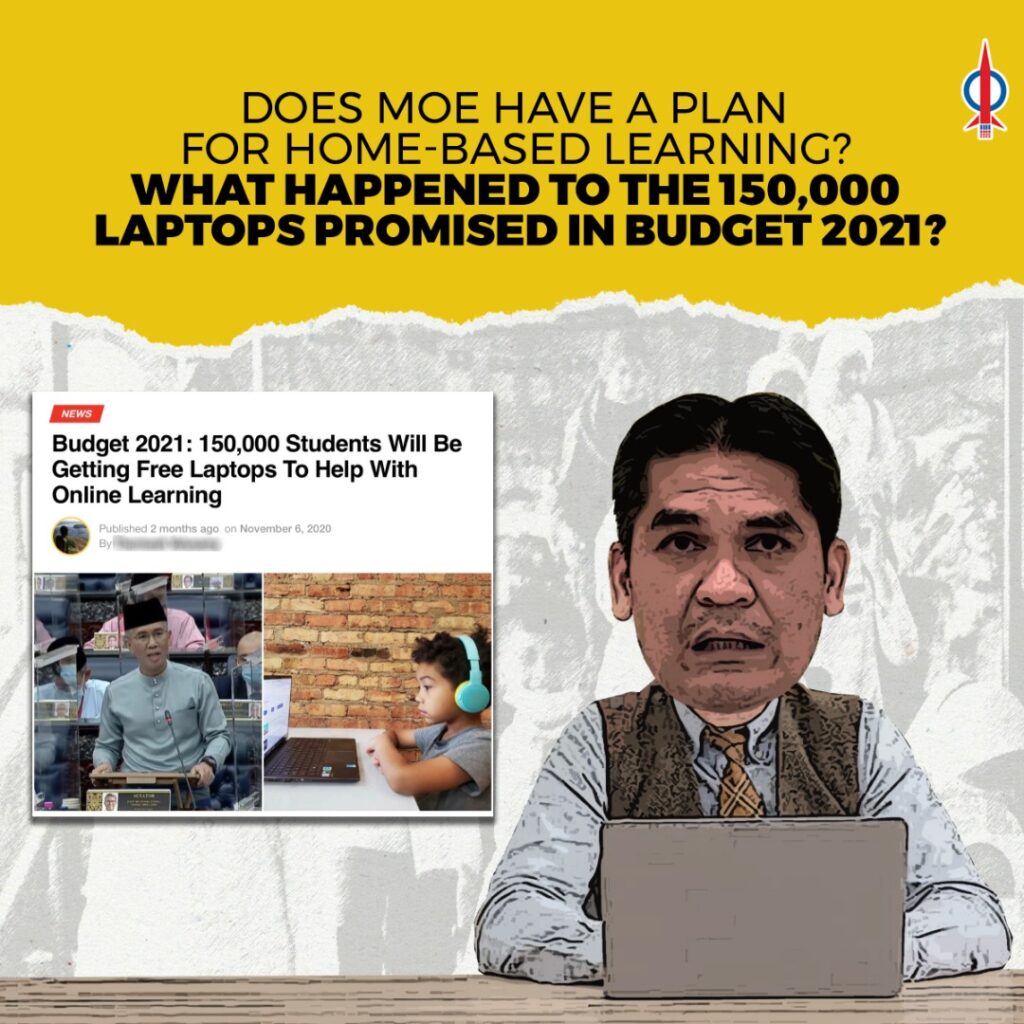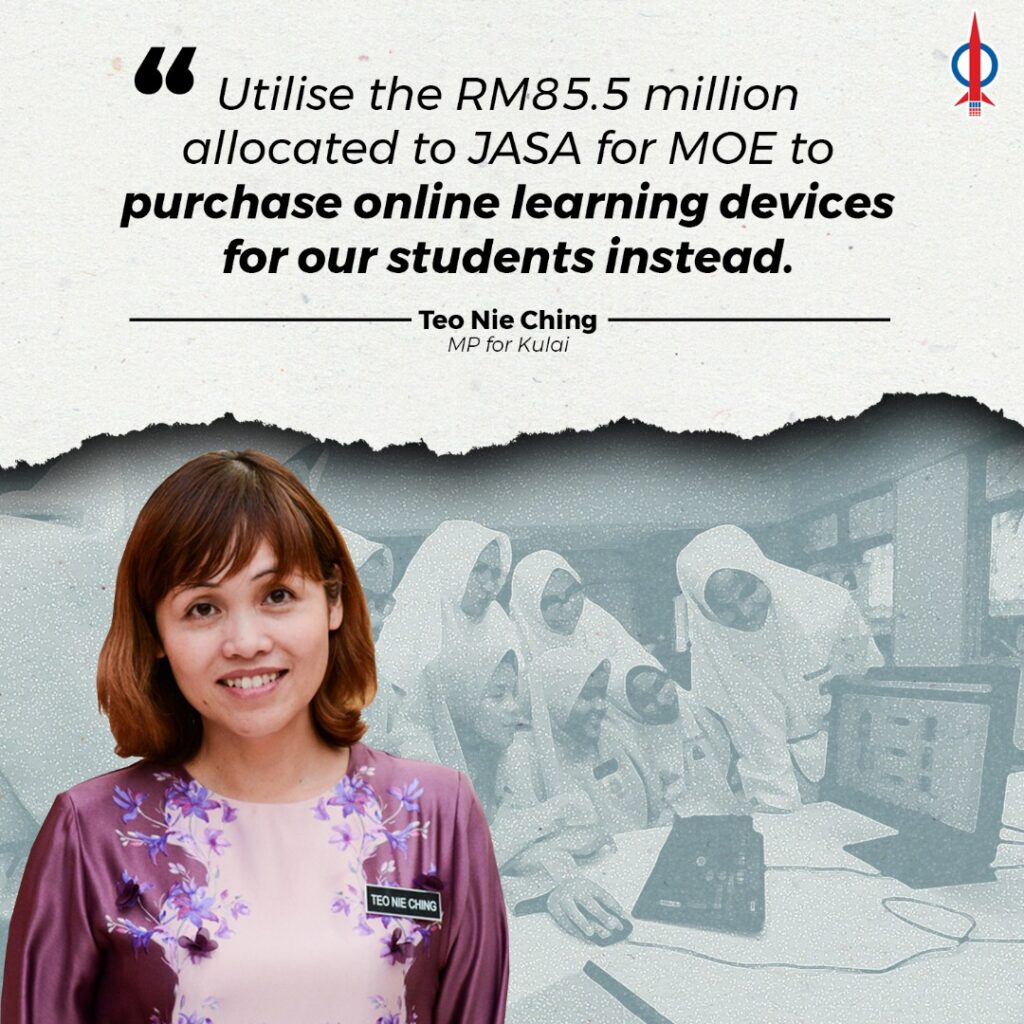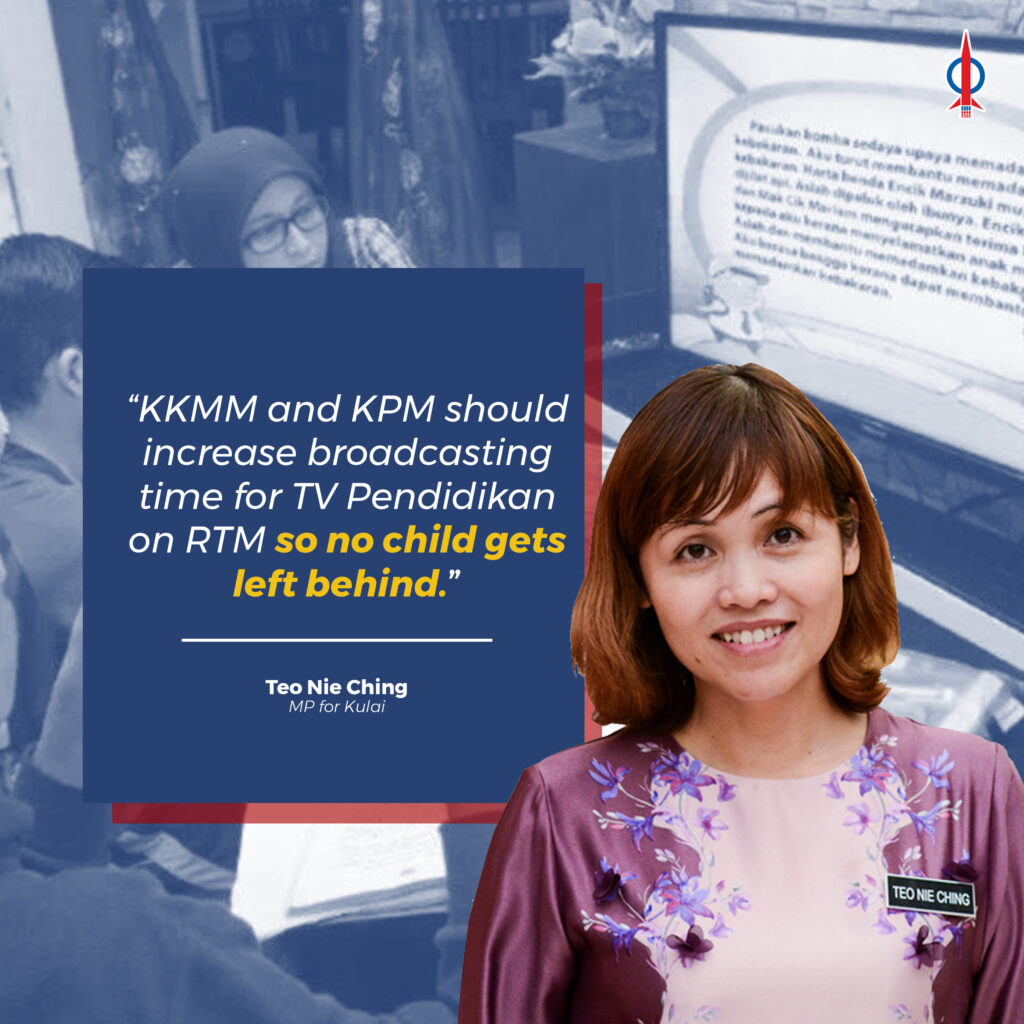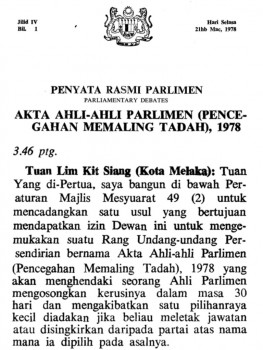Media statement by MP for Kulai, Teo Nie Ching on 25 January 2021:
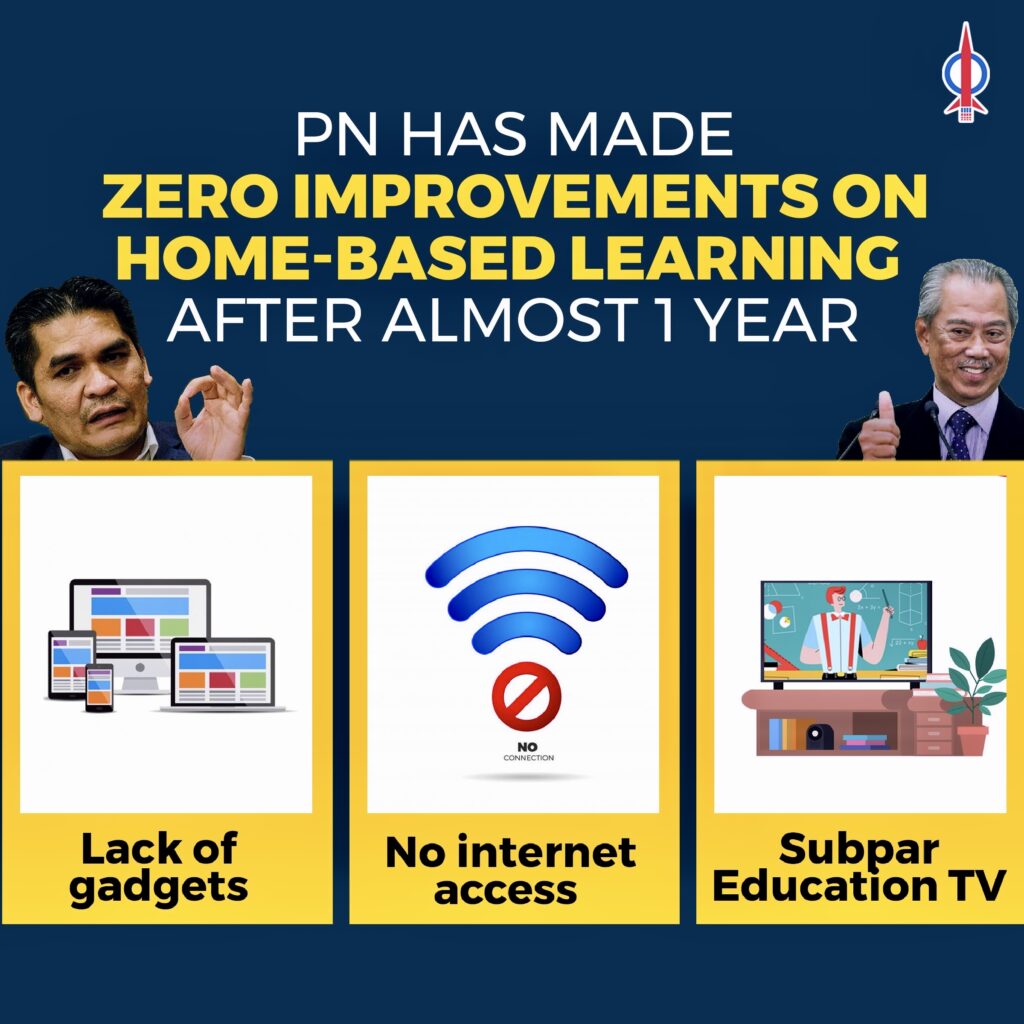
After implementing Home-Based Learning for almost a year, PN Government still fails to address 3 critical issues, ie lack of gadgets, no internet connectivity, and inadequate Education TV content.
Since March last year, the Education Ministry has been instructed to implement home-based learning initiatives. Yet after almost a year, our preparation and readiness for home-based learning is still below par. Until today, 3 critical issues that would determine the quality of home-based learning have not been addressed:
1. Lack of gadgets
Since April last year, MOE knew that 36.9% of students did not possess any device to follow online lessons. However until today, the 150,000 laptops promised by the Minister of Finance in Budget 2021 are still nowhere to be seen.
Last November, I said that 150,000 laptops are highly insufficient. For instance, the UK government is providing more than 1 million laptops and devices to disadvantaged children in years 3 to 11 who do not have access to a device and whose face-to-face education has been disrupted.
In Singapore, all secondary school students are going to receive a personal laptop or tablet for learning.
We have 4.7 million students in government primary and secondary schools. If 37% of them do not have any device to follow online learning, that means 1.7 million students urgently need a laptop or tablet. How can our government be satisfied with only 150,000 laptops when we all know home-based learning is now the new norm?
2. No internet access
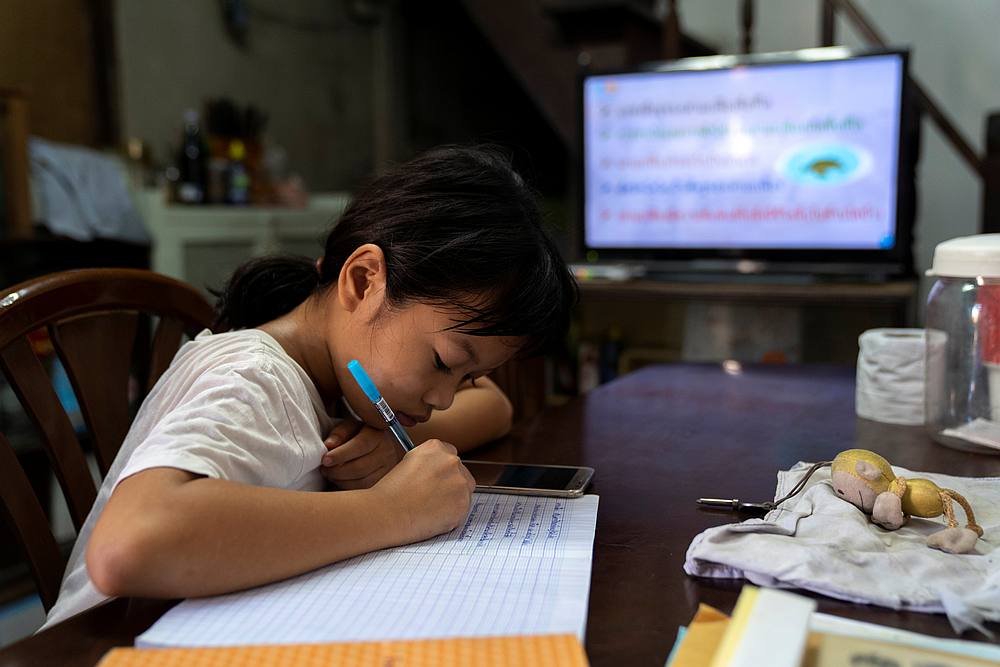
Last year, our social media was flooded with news of teachers and students enduring a lot of hardship just to get internet access.
- Veveonah Mosibin jungle-trekking and climbing trees just to sit for her exams;
- Cikgu Mujalifah Kassim from SMK Sibu Jaya, Sibu visiting her students who have no internet access and marking their homework outside their gates;
- Teacher Sambau Dugat from SMK Lubok Antu leading a group of primary and secondary students from his village in Nanga Sumpa and nearby Nanga Jambu on a jungle trek just to get good internet coverage; and
- Eight students from Ranau, Sabah, who depended on a particular spot on a suspension bridge to gain internet access for an online class were badly injured when the bridge collapsed.
What lesson has our Government learnt from all these mishaps, and what is their plan to assist students who do not have internet access? This issue is especially pressing for students in interior areas where DSL, cable, or fibre internet options are not available. Is our Government prepared to provide free satellite internet data packages for them?
3. Education TV
As of today, online learning is clearly only a privilege for certain students. Therefore, I cannot emphasize enough the importance of educational television service. The current education television programme (also called TV Pendidikan) broadcasts for five (5) hours a day on RTM’s Okey TV channel and NTV7. Meanwhile, for Astro subscribers, there are additional two (2) hours of broadcast and another two (2) hours of replay.
In other words, we only have seven (7) hours of content a day to cater to the learning of students from Standard 1 to Form 6. Again, how can this be sufficient when the combined learning hours in school are easily 60 hours a day? We have been pointing out inadequacies of Education TV since 2020 and the Minister of Education has even admitted these weaknesses. But why is there still no improvement when the reopening of schools has been further postponed for 2021?

